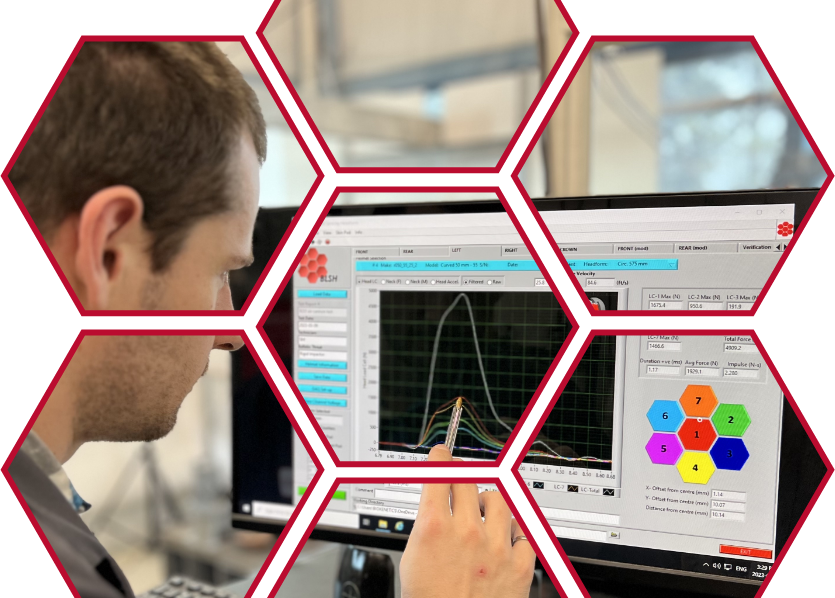Impact to the human head always induces both linear and rotational motions. The impact vector applies a radial force offset to the head’s centre of gravity as well as a tangential force acting across the surface of the cranium, both which induce rotational motion. In theory, it could be imagined that a blunt impact aimed straight through the centre-of-gravity of the cranium could produce only linear motion. But due to the ovoid shape of the head and the connection to the human neck, every blunt impact induces varying levels of rotational motion. Rotational motion of the cranium induces shear strains within the delicate structures of the brain and surrounding tissues, which can lead to brain injuries ranging from mild concussion to diffuse axonal injury. Biokinetics routinely measures rotational head accelerations within the Hybrid III headform family, either directly using the 3-2-2-2 linear accelerometer array, or derived via angular rate sensors (ARS). Both can be captured and analyzed using Biokinetics’ BioDAQ software.
Explore Our Innovative Testing Services Today and Take the First Step Towards a Safer Tomorrow

Copyright © 2025 Biokinetics | Acknowledgements | Privacy Policy